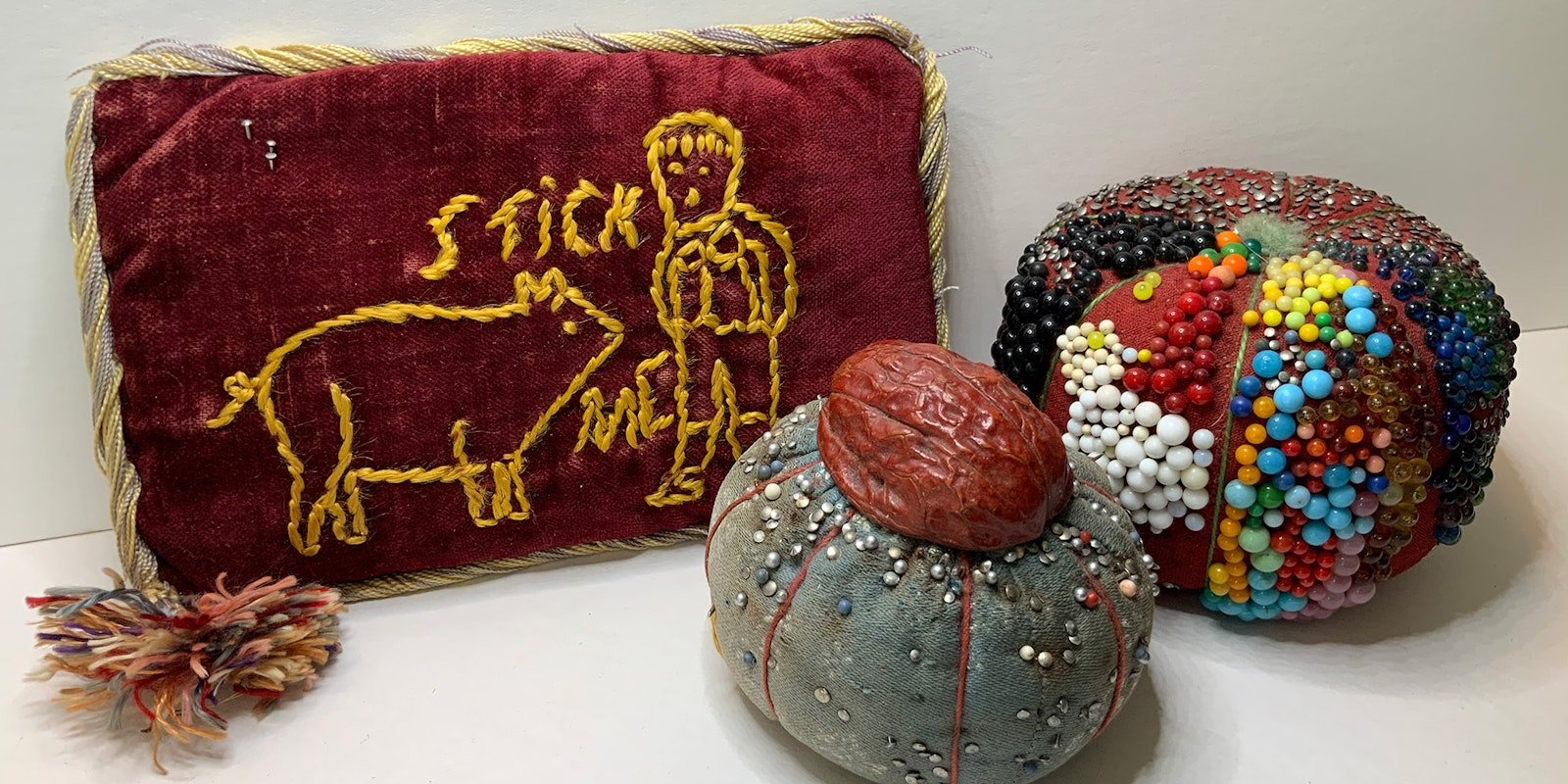Pins date back to ancient times, as do ways to store them. Pinkeeps and discs wax and wane in popularity, but the pincushion has endured. Pincushions can be stand-alone, worn by the stitcher, or a component in another object. From gaudy to elegant, and everything in between, pincushions are limited only by the imagination.
My favorites are the one-of-a-kind cushions, which often beg the question, why? We cannot answer that question. These quirky, sentimental examples hold extra meaning to their owners. Some represent a private joke between friends, commemorate a special occasion, or serve as a reminder of another time and place.
When you are faced with hours of darning and mending, it is delightful to have a pincushion close at hand that evokes a smile and fond memory. Charming Victorian examples, such as the embroidered, red-velvet, pillow-style cushion (above, left) with the phrase “Stick Me” and an image of a boy and pig, bring a light-hearted grin. The maker chose the design not for its beauty, such as an embroidered floral bouquet or a design-themed sentiment related to sewing, but for its humor.
Some pincushions are embellished with found objects and mementos. One whimsical example from my collection includes half of a walnut shell painted red and glued to the top of a faded blue silk pincushion (above, center). It shows signs of heavy use, which implies it was frequently enjoyed and practical! One wonders if the nut served a functional purpose, why paint it? Personally, it makes me smile because I remember finding it while antique shopping with a friend. But I am sure there is a back story we will never know.
 Nineteenth-century pillow-style pincushion. Pin heads form the border design framing the words “Heaven Bless Thee.” 6 x 4 inches (15.2 x 10.2 cm). Collection of the author.
Nineteenth-century pillow-style pincushion. Pin heads form the border design framing the words “Heaven Bless Thee.” 6 x 4 inches (15.2 x 10.2 cm). Collection of the author.
Other pincushions are embellished by the placement of pins, and some pins become design elements, such as in antique birth and wedding pincushions given as gifts. The pins are fully stuck into the cushion and the pin heads are used to form sentimental dedications and designs (see above). In some cases, the owner sorts the pins for practical purposes to know where each type of pin is stored (top, right). The arrangement of pin heads creates a secondary design. Did the owner purposely sort the pins? Anyone who has stitched in the company of a bored child may wonder whether the task of sorting the pins was meant to keep little fingers busy.
I hope your pincushions evoke smiles and good memories.
Dawn Cook Ronningen is the author of Antique American Needlework Tools (Schiffer, 2018). She lives in Minnesota, where she enjoys her extensive collection of antique textiles, embroidery, and needlework tools.
Originally published September 14, 2020; updated February 10, 2025.

